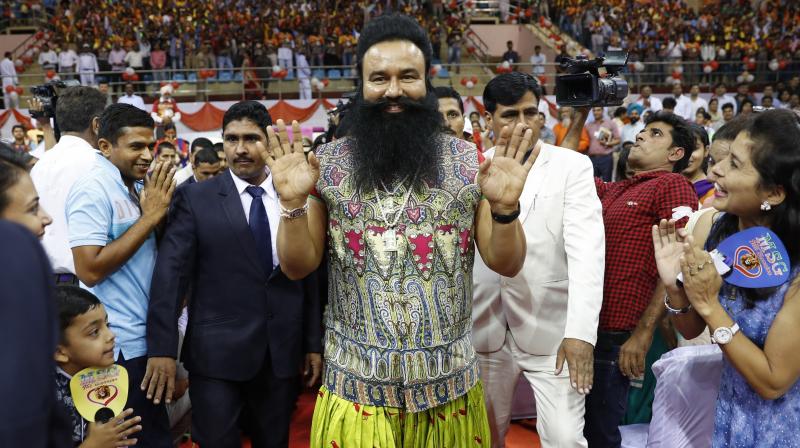Of predatory gurus & mores of a subcontinent

The name Ram Rahim Singh did not exactly ring a bell when it appeared on my radar late last week, prompting me to sit up and pay proper attention only after reports emerged of horrific violence that entailed 38 deaths and hundreds of injuries.
It did, however, trigger a reminder of a historical figure who had similarly adopted a non-denominational nom de guerre when he set out to avenge the Jallianwala Bagh massacre of 1919 by assassinating Michael O’Dwyer, the lieutenant-governor of Punjab who had endorsed his near-namesake Gen. Richard Dyer’s Amritsar atrocity, a couple of decades after the event.
When he was executed in London’s Pentonville Prison in 1940, Udham Singh bore the alias Ram Mohammed Singh Azad (according to some the Ram was a posthumous addition). He did not wish to go down as a follower of any particular faith in the annals of India’s struggle for liberation. The subcontinent holds its own in terms of gurus.
Gurmeet Singh’s motivations in adding “Ram Rahim” to his name were presumably a great deal more mundane. His followers reportedly include both Sikhs and Hindus, even though he is said to have injured the sensibilities of followers of both faiths at various times by casting himself in the guise of Vishnu and Guru Gobind Singh.
If there are no Muslims among his devotees, that may mainly be attributable to their exodus 70 years ago from the parts of India that constitute Haryana and Punjab, where the adherents of his Dera Sacha Sauda are concentrated.
Gurmeet has thrived — not just as an ordinary guru but as a flamboyant rock and film star, and furthermore as a go-to guy for vote-seeking politicians who has been courted by both the Congress and the BJP. He switched allegiance from the former to the latter about a decade ago, and has since then garnered not just praise but tax breaks and donations from both regional and national BJP leaders, including Prime Minister Narendra Modi.
This is a familiar phenomenon, although the details and degree of delinquency inevitable differ, that cuts across national and religious boundaries. Bizarre cults have emerged in America, for ins-tance, over the decades, with varying degrees of appeal, most of them extracting their raison d’être from elements of the Christian faith.
The subcontinent, holds its own in terms of the proliferation of gurus, some of whom acquire sizeable international followings. The best known of this was Maharishi Mahesh Yogi, who — at least briefly — counted the Beatles and many other Western cultural luminaries among his flock. (It may not be entirely coincidental, though, that the Beatles fled his ashram in Rishikesh following rumours of the transcendental meditation expe-rt’s inappropriate behaviour.)
Bhagwan Shri Rajneesh faced legal troubles in America, but nonetheless boasted a fair number of disciples. And when Satya Sai Baba died, his funeral in 2011 attracted Prime Minister Manmohan Singh, Congress president Sonia Gandhi, Gujarat Chief Minister Narendra Modi and cricket superstar Sachin Tendulkar.
Charlatans of a religious, pseudo-religious and often enough semi-political variety ultimately fulfil a societal need that flows from the inadequacies of the society in question. Many cults include a degree of social work in their repertoire. It often pays rich dividends, regardless of whether what they have in their mind is some kind of a caliphate or simply a viable economic model.
Karl Marx’s oft-cited remark about faith being “the opiate of the people” is all too often quoted without its preamble: “Religion is the sigh of the oppressed creature, the heart of a heartless world, and the soul of soulless conditions.” False consciousness, though, can never be a remedy for oppression or a substitute for the absence of heart and soul.
By arrangement with Dawn

